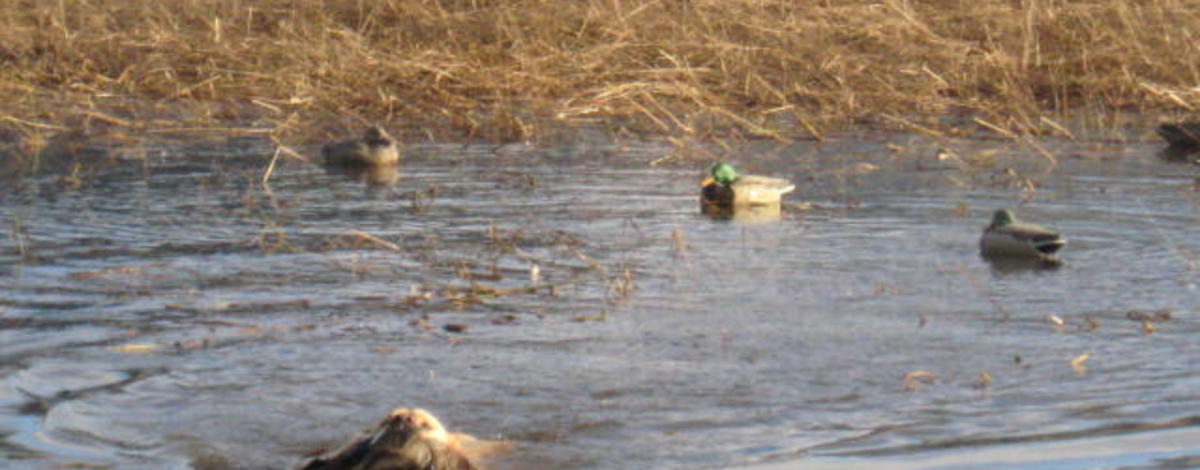With the waterfowl season opening in parts of Idaho on Oct. 2 and the rest of the state just two weeks behind, Fish and Game is reminding hunters to beware of harmful algal blooms and protect themselves and their canine companions by following recommendations from the Idaho Department of Environmental Quality and the Idaho Department of Health and Welfare.
As of Friday, Oct. 1, there were 19 active advisories across the state related to harmful algal blooms, according to the Idaho Department of Environmental Quality's website. Among those is Lake Cascade, where the waterfowl season opens on Saturday, Oct. 2.
In general, when a health advisory has been issued, DEQ recommends avoiding exposure to water experiencing a harmful algal bloom, and to take extra precautions to ensure children, pets and livestock are not exposed to the water where blooms are present. .
Here is some additional information about cyanobacteria/harmful algal blooms provided by DEQ specifically with waterfowl hunters, their hunting dogs and others may be near a body of where they are present.
What are cyanobacteria?
Cyanobacteria are photosynthetic bacteria that occur naturally in Idaho’s lakes and rivers. Many of us learned about “blue-green algae” in school, but these algae are actually bacteria that photosynthesize like plants. The photosynthetic structures within the bacterial cell contain the blue-green pigments that give cyanobacteria their color and their name.
Where and when do cyanobacteria blooms occur?
Cyanobacteria are present in nearly all water bodies, but typically exist in numbers too small to cause problems (sight, smell, and cyanotoxins). However, a variety of environmental conditions influence cyanobacteria population growth. Hot and warm weather conditions can allow cyanobacteria populations to “bloom” to high enough numbers that a variety of toxins, known as cyanotoxins, are produced in quantities that can be harmful to people and animals. These ideal conditions include warm temperatures, low or slow water flow, high nutrient levels, strong light, and calm weather.
What do they look like?
Cyanobacteria harmful algal blooms (blooms) in Idaho can vary in appearance, often looking like bright green water or pea soup, pollen, grass clippings, spilled paint, mats, green or blue-green foam, or dense surface scum. Blooms can range in color from blue and bright green to brown, red, and even white. Some blooms may produce a foul odor.
How dogs get exposed
- Swimming, wading, or drinking in lakes, ponds, rivers, or reservoirs that have potentially harmful algal blooms present. Dogs can also be more vulnerable due to the fact that they clean their fur by licking and ingesting any potential cells or toxins which have attached to the dogs coat. Dogs can also become exposed by retrieving birds known to be swimming in algal blooms.
- Dogs can also get exposed by eating and ingesting cyanobacterial mats or algal mats containing cyanobacteria. This includes benthic mats which have detached from the ground and floated to the surface, where dogs are more likely to eat them.
How hunters can protect themselves and their dogs
- Check if a waterbody has a active advisory for cyanobacteria.
- Do a visual observation of the water you intend on hunting in before you allow your dog to enter. If you are still unsure whether or not a bloom could be present, always use caution and avoid using the water.
- Do not let your dog swim, wade, drink, or retrieve birds in a water body that has an active bloom.
- Do not let your dog eat mats of algae or scum along the shoreline or river banks.
- Avoid eating or allowing your dog to eat the guts, skin or fat of waterfowl harvested from an area experiencing a harmful algal bloom. Properly cooked and trimmed meat is okay to eat.
- Carry potable water for your dog as an alternative drinking water source while recreating near waterbodies with active blooms.
- If you dog does end up in the water, be sure to wash them with clean water before they are able to clean themselves.
What are the signs of cyanotoxin poisoning in dogs?
- Symptoms vary, and can appear within minutes to days. Symptoms may include vomiting, diarrhea, weakness, difficulty breathing, seizures, and death.
- If your dog is showing symptoms after exposure, contact your veterinarian immediately.

